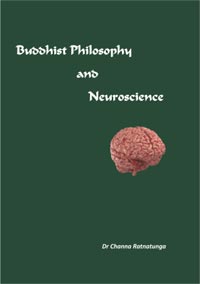Neuro-scientific underpinnings of Satipattana
View(s): Satipattana Sutta was the Buddha’s instruction how to gain an insight (Vipassana) into the true nature of reality. The instruction was to practise Mindful Meditation -Samma-Sati, by Vipassana Bhavana. The growing popularity of retreats to allow busy householders to indulge in this type of meditation, both in the East and West, speaks volumes for its beneficial effects. Mindful Based Stress Reduction (MBSR) therapy programmes abound in psychiatric clinics throughout the west.
Satipattana Sutta was the Buddha’s instruction how to gain an insight (Vipassana) into the true nature of reality. The instruction was to practise Mindful Meditation -Samma-Sati, by Vipassana Bhavana. The growing popularity of retreats to allow busy householders to indulge in this type of meditation, both in the East and West, speaks volumes for its beneficial effects. Mindful Based Stress Reduction (MBSR) therapy programmes abound in psychiatric clinics throughout the west.
Living in the present moment, relieves one of the baggage of the past and the worries as to what the future might bring. It calms the mind and if practised assiduously, by actively not-reacting to the sensory and mind triggers we are constantly bombarded with on a daily basis, we begin to see the reality of, the conditioning of our minds, i.e. ‘self’ has undergone during our tenure of this lifespan on Earth.
Reacting to these sense and mind triggers creates kamma as they trigger reflex ‘survival of self’ responses. These link to nature’s law of conditionality (paticca-samuppada) leading to the rebirth cycle and the sansaric existence which is dukkha.
The ‘self’ is the culprit. Realizing that the self is an ever-changing neuro-plasticitic construct by the brain for survival in the perceived ongoing reality is a must. Hence ‘a permanent self-concept’ is not scientifically tenable. No-self (Anatta) concept follows and needs no protection for survival unless ‘the being’ is attached (clinging) to it. This non-reactive attitude leads to no kamma being generated. Satipattana is focused on eradication of the self.
How does neuroscience, developed with objectively derived data, using currently available sophisticated tools, studying the brain, help in validating mindful meditation, as a valuable tool to reach this end? Functional Magnetic Resonance Imaging (fMRI) scans done have shown assemblies of brain cells (neurons) forming specific networks in the brain. Two of these networks are pertinent. The Default Mode Network (DMN) and the Central Executive Network (CEN). Both networks do not work at the same moment in time. The DMN deals with ‘self’, its ruminations, imaginings of the past and its worries regarding the future. The CEN is task related and focused purely on the present moment.
The two networks have a structural signature on scans of the brain, a feature allowing neuroscientists to recognise what network is in use whilst scanning (fMRI) individuals. CEN if persisted with (described as going from a state of mind to a trait) is where the individual enters the CMN at will. This results in the DMN attenuating as an active state of mind i.e. attenuating ‘self’.
Further the DMN is currently described as having two fMRI signatures which highlights the existence of two composite parts to ‘self’. A ‘narrative self’ i.e. one’s ego and a ‘minimal-self’, one’s awareness of one’s body parts. In Buddhist philosophy, the last fetter to negate is the narrative self to gain an Arahath mind.
Functional Magnetic Resonance Imaging (fMRI) scans on monks brought to the US by the Dalai Lama from Tibet with over 30,000 hours of Vipassana meditative experience and scanned while meditating, have revealed objective data of structural and functional changes of the brain and that those with a CEN trait have an attenuated DMN. This reinforces the fact that Vipassana Bhavana attenuates (withers) ‘self’, and has become currently a scientifically established fact.
(The book ‘Buddhist Philosophy and Neuroscience’ which expands on these concepts is available at Sarasavi bookshops and the Buddhist Publications Society, Kandy priced at Rs 800.)
Searching for an ideal partner? Find your soul mate on Hitad.lk, Sri Lanka's favourite marriage proposals page. With Hitad.lk matrimonial advertisements you have access to thousands of ads from potential suitors who are looking for someone just like you.


